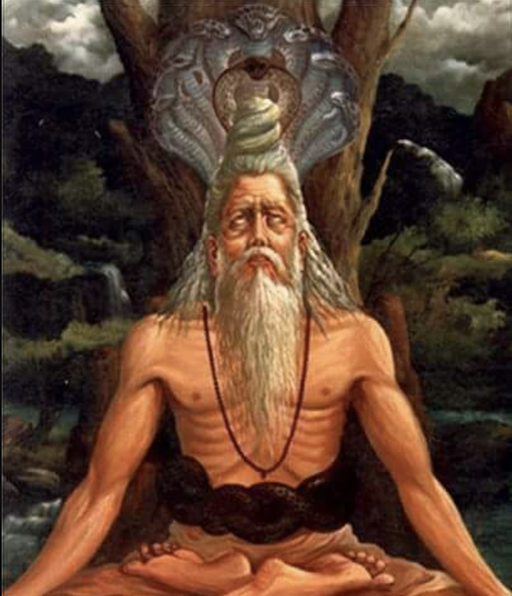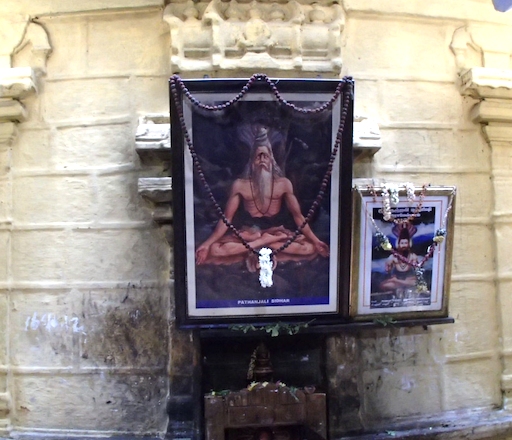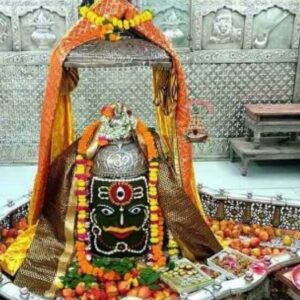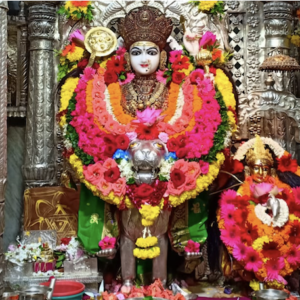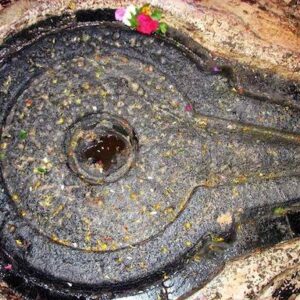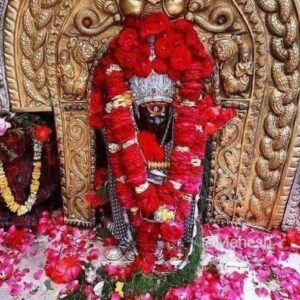This is a Jeevasamadhi of Maharshi Patanjali Siddhar, one of revered 18 Siddhars from Tamil Nadu.
There is a place to sit and meditate next to the Jeevasamadhi. You can go into meditative states here effortlessly.
How to get there
The Jeevasamadhi is just behind the Nataraja Shrine, inside the Shree Rameshwaram Jyotirlinga Shivam Temple, Rameshwaram.
Map: https://goo.gl/maps/nyN7sJKd9daFczYu7
About Patanjali Siddhar
Patanjali is one of the 18 Siddhars in the Tamil Siddha (Shaiva) tradition. Patanjali learned yoga and other disciplines from the famous Yogic Guru, Nandhi Deva (the divine bull of Lord Shiva). Nandhi is one of the 18 Yoga Siddhas (perfected ones) initiated by Lord Shiva. Nandhi Deva’s disciples include Patanjali, Dakshinamoorthy, Thirumoolar, Romarishi, and Sattaimuni.
Siddha Patanjali is a great yogi of Tamil Shaiva Siddha tradition. He is variously estimated to have lived between the 2nd century B.C. to 4th century A.D. He is one of the great “Siddhar” and revered as one of the great saints who rendered a lot towards the art of Yoga. He is the author of Yoga Sutra, one of the greatest works on Yoga. Today, the Yoga Sutras are the most referenced text on yoga, making Patanjali “the father of yoga” in the eyes of many.
Possibly, Patanjali may not be one person, and there could be several Patanjalis in the course of Indian History. The Patanjali Yoga Sutra, also called Patanjala Yoga Darshanam, is a great composition of Yoga, which led to the dawn of today’s yogic beliefs and practices, and is a classic text on Raja Yoga. Beyond the Yoga Sutras, commentaries on other notable works attributed to Patanjali are Mahabhashya, dating from about the second century BCE, a commentary on an authoritative Sanskrit grammar text written by the Indian grammarian, Panini. He was one of those saints who gave metaphysics as a Sanskrit grammar which the people highly appreciated.
Patanjali also authored a medical text called Patanjali Tantra. He is cited, and this text is quoted in many medieval health sciences-related texts. Patanjali is called a medical authority in several Sanskrit texts such as Yogaratnakara, Yoga Ratna Samuccaya, and Padarthavijnana. Another Hindu scholar, also named Patanjali, likely lived in 8th-century CE and wrote a commentary on Charaka Samhita, and this text is called Charakavarttika. According to some modern era Indian scholars such as P.V. Sharma, the two medical scholars named Patanjali may be the same person, but a completely different person from the Patanjali who wrote the Sanskrit grammar classic Mahabhashya.
While modern scholars generally believe this timeline makes it impossible for it to have been the same Patanjali who compiled all these works, many hold a more traditional view that a single Patanjali is indeed responsible for all. Some might think it ridiculous for anyone to believe that a single person could be the author of texts written possibly more than 1,000 years apart. However, Patanjali is also considered by many within the Hindu tradition to be a divine figure.
Read More
https://mydattatreya.com/patanjali/
